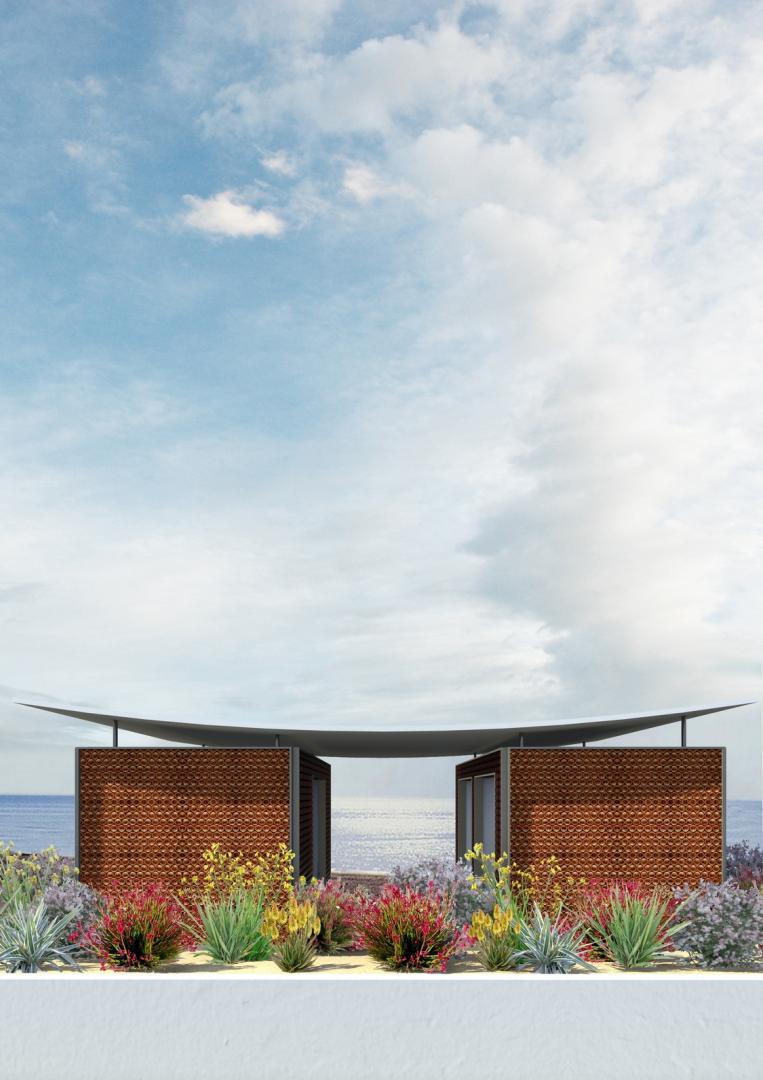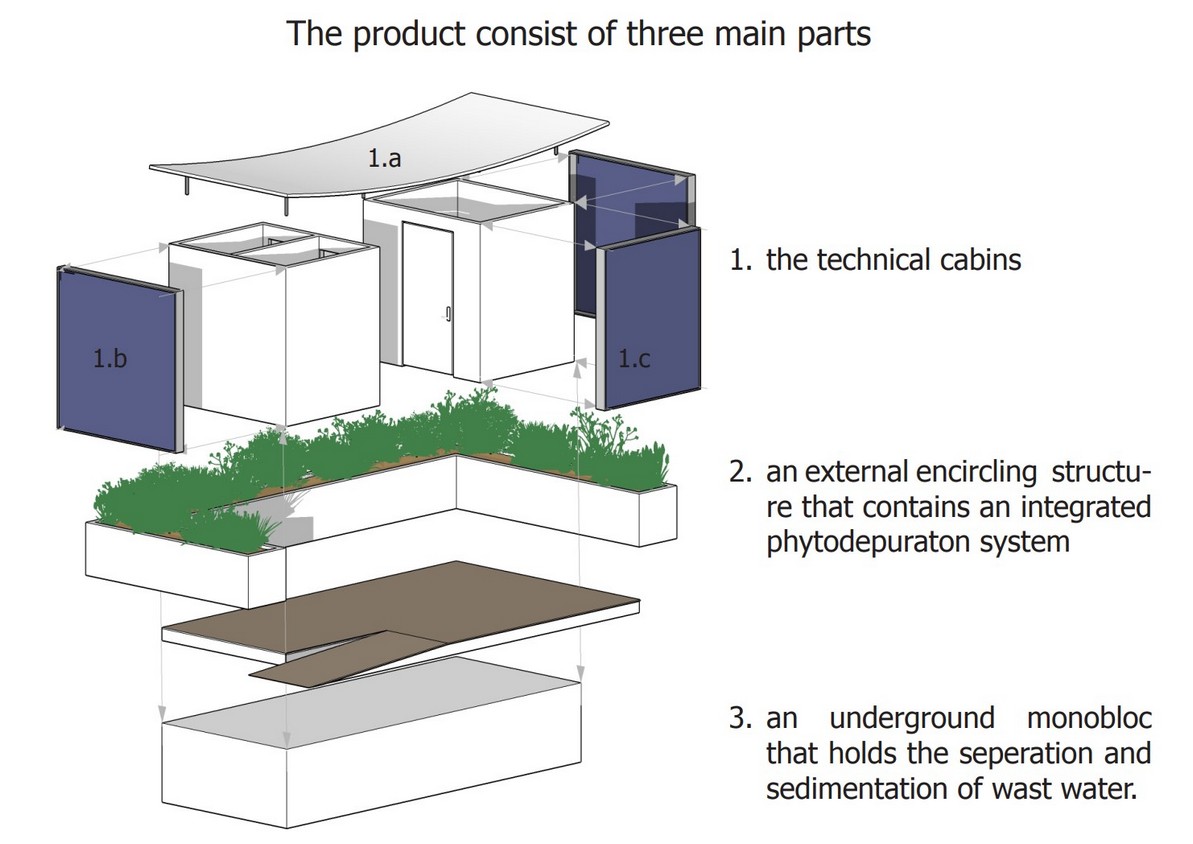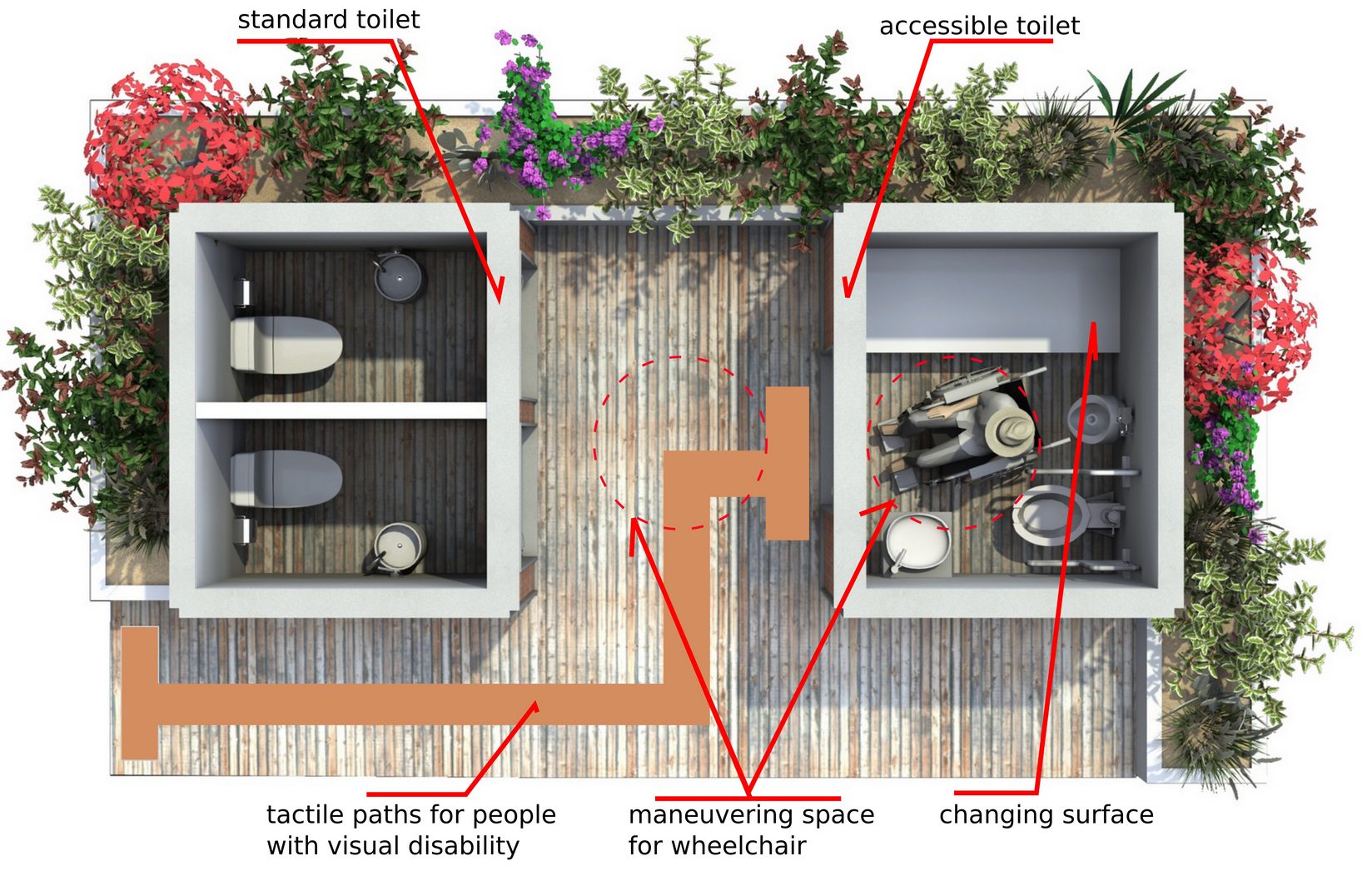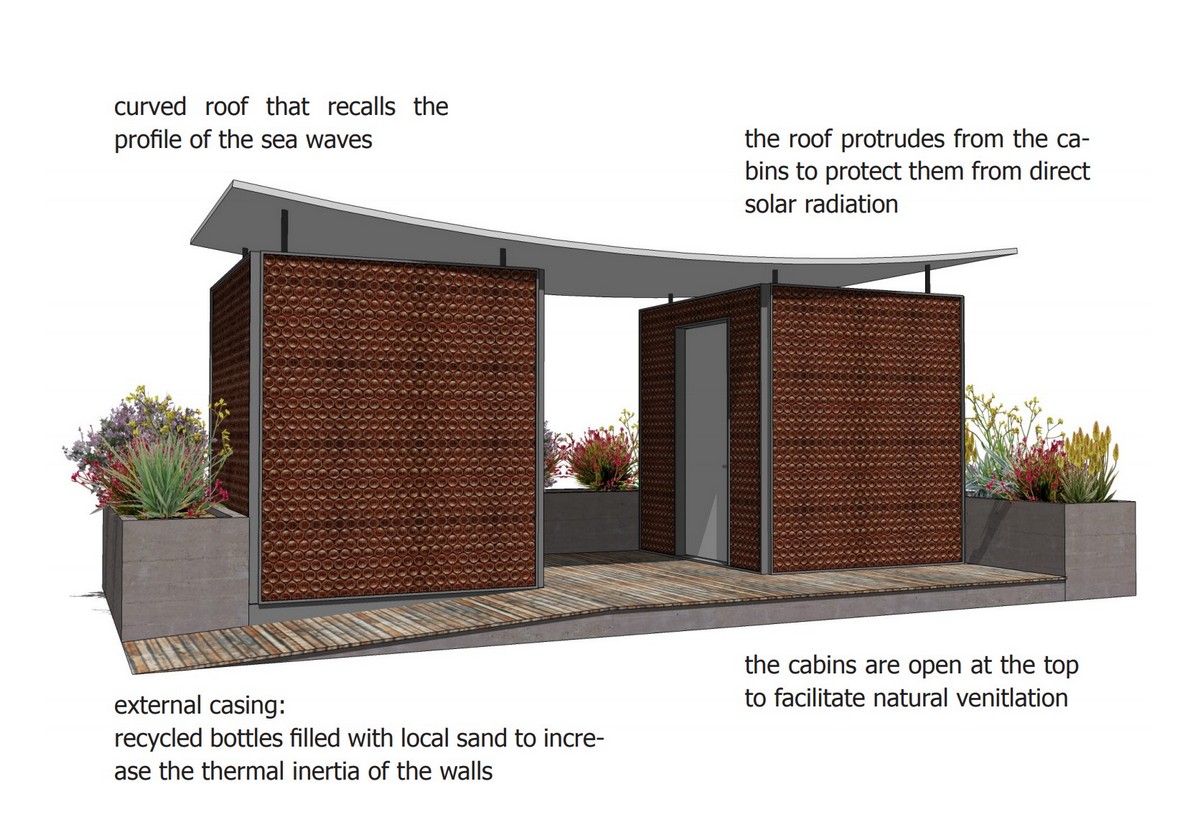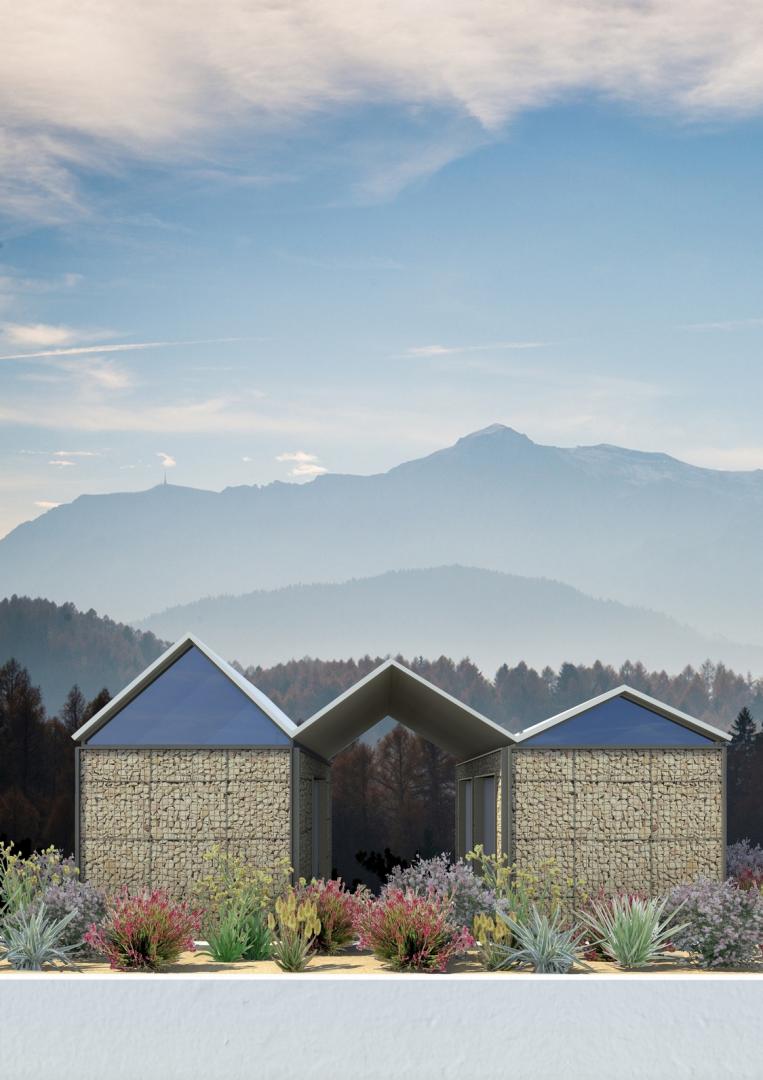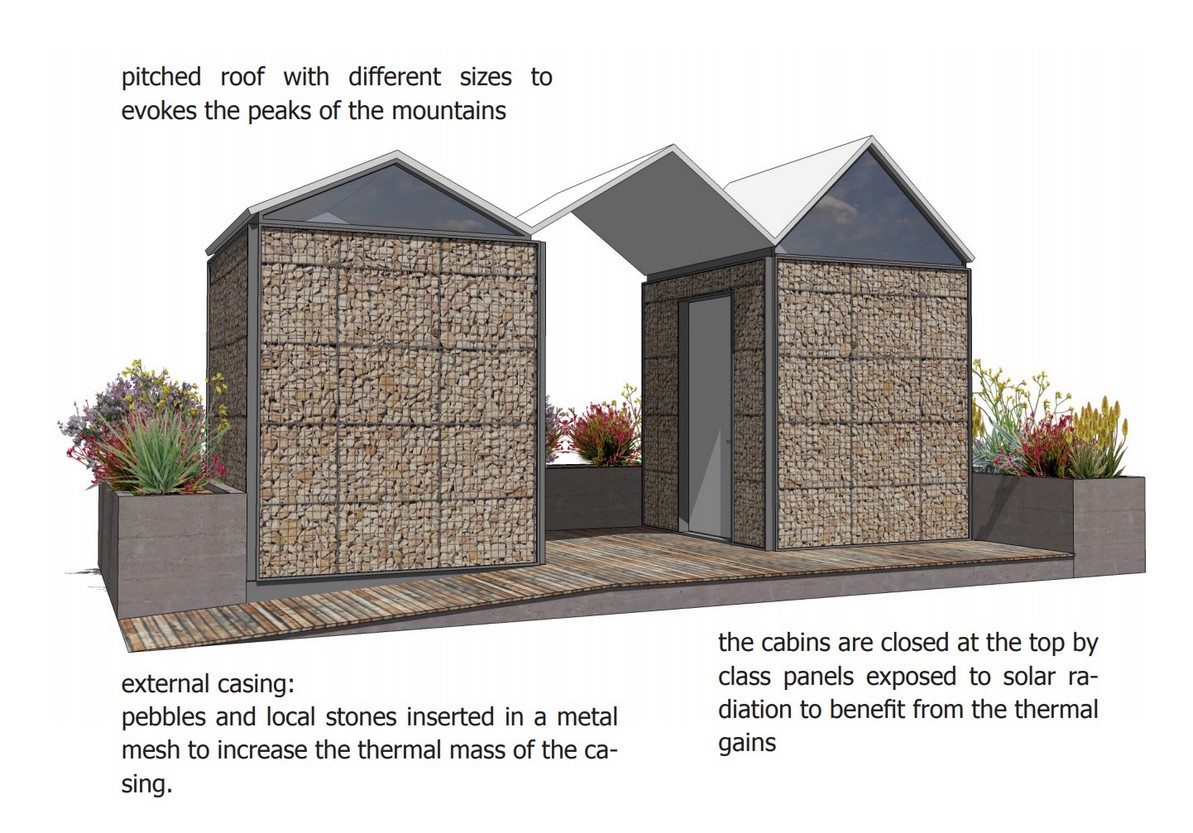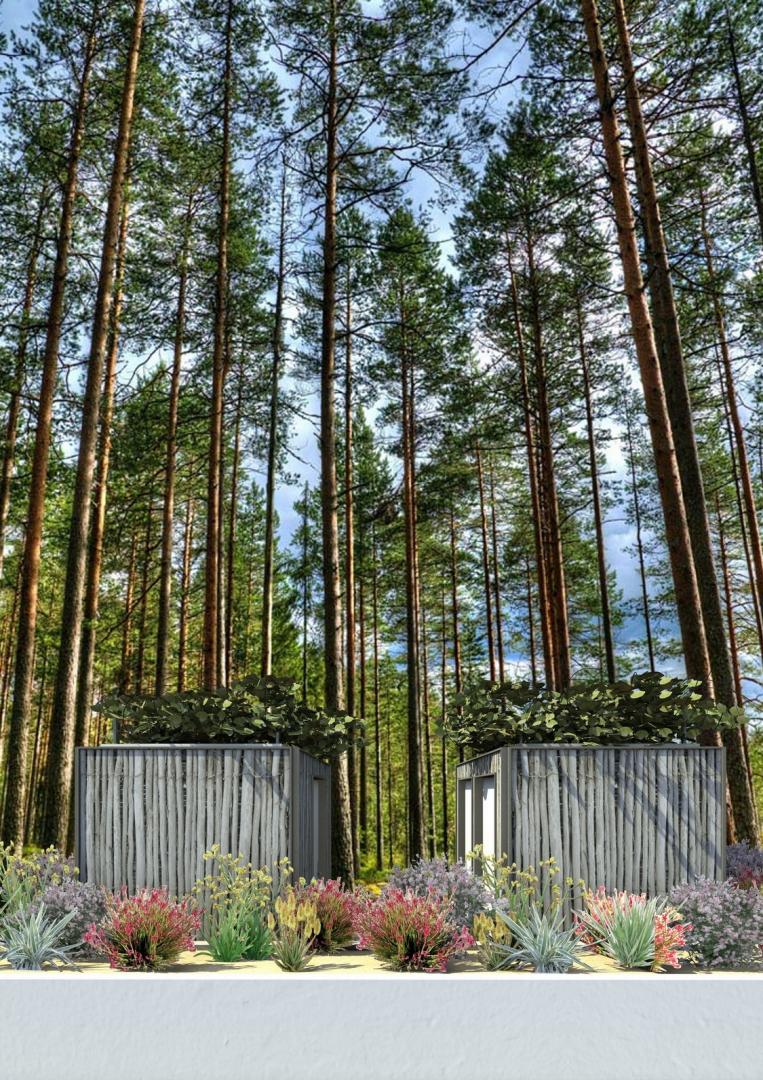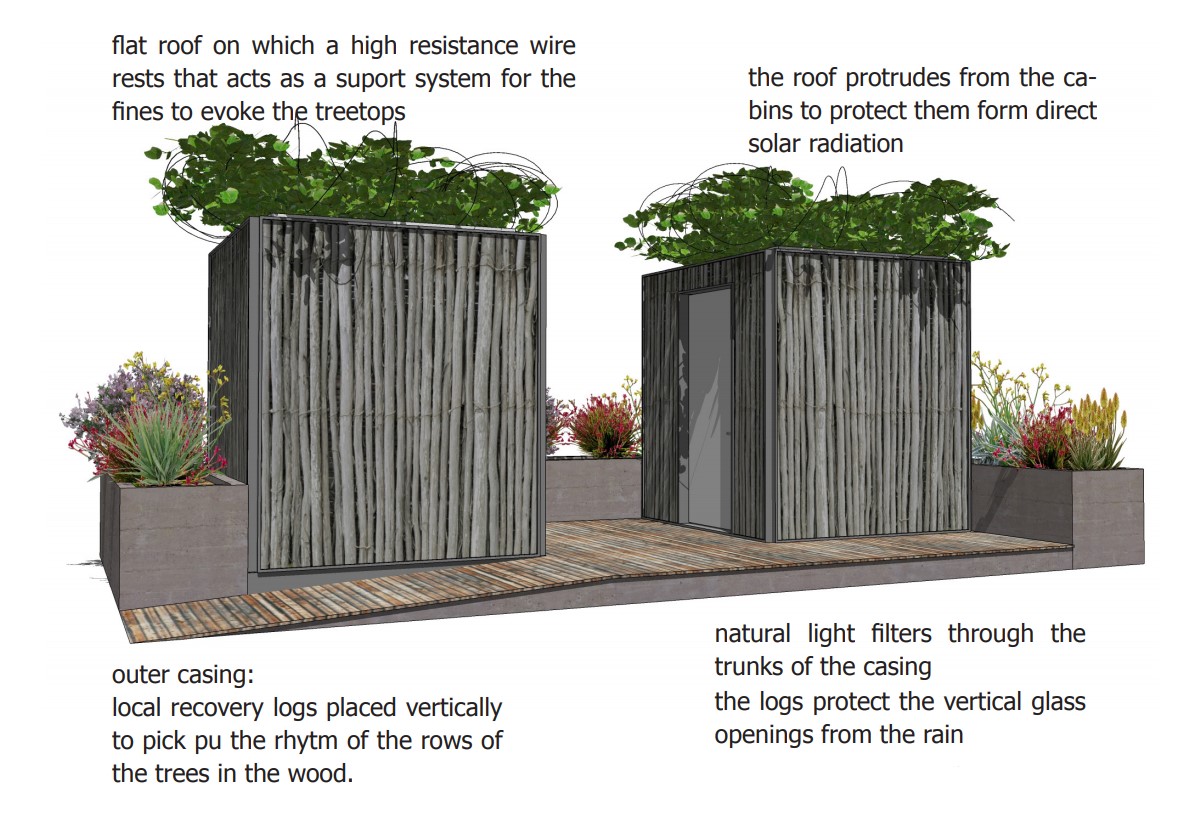PhiTOilet
Basic information
Project Title
Full project title
Category
Project Description
PhiTOilet is ecological, beautiful and accessible-to-all:
based on phytodepuration, it's autonomous from sewer;
it's flexible, it adapts its aspect using on site materials to perfectly integrates with various surrounding landscapes;
it's inclusive and accessible-to-all due to Universal Design principles, removes obstacles which, even today, negatively affect the daily life of millions of EU citizens with disability
it's modular and economical both in implementation and management.
Project Region
EU Programme or fund
Description of the project
Summary
PhiTOilet is a new concept for an ecological, beautiful and accessible-to-all public bathroom.
It is autonomy from the sewerage: wastewater treatment is carried out via an integrated phytodepuration system that makes the product particularly suitable everywhere there would be a technical or economical difficulty (or impossibility) connecting to a sewer system.
It's a zero environmental impact product: natural waste water treatment system allows for a more sustainable use of water resources, it does not require any chemical reagents and avoids pollution of the soil.
It's a beautiful product always in harmony with the landscape: the external shell is made out of local environmental friendly materials; together with the shape, adjusted to any local micro-climate and its surrounding context; the flexibility of aesthetic solutions makes it possible to integrate it within the environmental context to guarantee optimal conditions of internal comfort with a minimum energy expenditure adapted to any local context.
It' an inclusive and accessible-to-all product: the design of the product and of the internal equipment is based on the Universal Design principles and guarantees the fruition to people with disabilities, from elderly to children and all those who have a transient or permanent physical difficulty.
It's based on modularity and prefabrication idea: the product is composed out of modular elements to meet different dimensional requirement and to reduce production costs.
In the attached illustrations you can see:
image 01: PhyTOilet in seaside landscape
image 02: PhyTOilet's main parts scheme
image 03: PhyTOilet basic/standard configuration - accessibility features
image 04: PhyTOilet in seaside landscape (with notes)
image 05: PhyTOilet in mountain landscape
image 06: PhyTOilet in mountain landscape (with notes)
image 07: PhyTOilet in wooded landscape
image 08: PhyTOilet in wooded landscape (with notes)
Key objectives for sustainability
The treatment of waste water from built environment, our homes and workplaces is fundamental to ensuring public health and environmental quality and sustainability.
In 2017 (see Urban waste water treatment in Europe - WAT 005-Published 10 Sep 2020), most countries in EU collected and treated urban waste water from at least 80 % of their population.
It means a purification deficit of 20% and the presence of places and situations where it is not always possible or appropriate to connect to the public waste water treatment system, for instance in remote areas, for temporary events, in areas of naturalistic, historical and archaeological value, for seasonal use structures, etc.
Phytodepuration represents a natural purification process of waste water that takes place through a set of chemical-physical and biological reactions carried out by micro-organisms and by vegetation against pollutants. The grey and black waters, once purified, can be reused for non noble uses: alternatively they can be discharged on the ground or in water course since the characteristics of the water, at the end of the purification process, fall within the limits of the law.
PhiTOilet is the environmental friendly answer to the need of a toilet in every environment in Europe and outside Europe (phytodepuration treatment system works up to 1400 meters of altitude). It can work in total autonomy from the sewerage.
PhiTOilet presents an external encircling structure for wetland phytodepuration system and an underground monobloc that holds the separation and sedimentation of waste water. The grey and black waters are separated inside the monobloc to reduce the end-volume to be purified. The maintenance of these models regards management of the vegetation and periodic emptying of the solids sedimentation compartment.
Key objectives for aesthetics and quality
The aesthetical concept is based on the easy integration with all possible surroundings.
Every PhiTOilet will be different due to its intrinsic construction features.
The product consist of three main parts:
1. the technical cabins
2. an external encircling structure that contains an integrated phytodepuraton system
3. an underground monobloc that holds the separation and sedimentation of waste water.
The coverage changes based on the surrounding context to integrate better with the landscape.
The internal casing fulfils the structural functions and is composed of modular prefabricated elements.
The external casing is always changing cause is designed to be made of environmentally friendly materials available on the site of the intervention that provide a wide range of aesthetic choices: depending on the landscape and climate context these may be stones placed in a metal cage, recycled bottles filled with sand, trunks of salvaged trees, ect.. applied on a wall support.
The quality of the experience in the use of a public toilet is mainly functional, but in addition to this anyone will interact with an object that is beautiful to see and walk around it, because it will be perfectly integrated with the landscape, with the same surrounding colours and materials. Phytodepuration does not produce bad odors and the vegetation contained in the external encircling structure adds aesthetic value inspired by the beauty of nature and the principles of sustainability.
Key objectives for inclusion
One of the main goal of PhiTOilet is to be inclusive, accessible for all and has to fit to the need of everyone. For this reason the product design is based and inspired on the principles of the Convention on the Rights of Persons with Disabilities (CRPD) and of the Universal Design.
Basic configuration is composed of n° 2 modular structures of the same dimension that host n° 2 basic standard toilet and n° 1 full accessible toilet.
The two modular structures lay on a common platform made accessible by means of a ramp.
The platform floor will be provided with tactile paths for persons with visual disability and it's dimensions and room between the modules ensure the necessary manoeuvres for people with motor disabilities fruition.
In particular the full accessible toilet module ensures the rotation of a person in a wheelchair, is provided with handles, wc, sink all at the right high for an autonomous use and is also provided with a changing surface for all those people with disabilities who, independently or with the help of a care-giver, need to lie down to use a bathroom. I emphasize this project solution because almost all public toilets in Europe do not have a changing surface and this forces those who need it to lie down on the floor.
Due to its modularity, PhiTOilet can be arranged in different configuration increasing the number of accessible toilets (e.g. for women and men).
It would be appropriate that the opted solutions for inclusion you see at this stage will be subjected to an audit and ‘civic test’ that will actively involve people with disabilities: through their presence they will be able to test, give directions and suggestions and, at the end of the process, validate the prototype in relation to its best usability.
Innovative character
- there's no product like this on the market: some companies market "chemical type" toilets that are essentially wastewater collectors that must be replaced periodically or emptied completely very often, are in direct contact with the wastewater accumulation tank, in many cases generates bad odors and does not guarantee optimal hygiene conditions. They have a plastic structure and are generally not aesthetically pleasing, are not acoustically and thermally insulated;
- it responds to a real need of many stakeholders: there are many potential interested stakeholders such as (A) Municipalities and public administrations that manage green spaces where they can install a public toilet without the need to carry out major construction and excavation works; (B) Tourist areas managers (camping, road and motorway parking areas, camper parking areas, bathing establishments, protected natural areas, historic villas, golf courses, areas equipped for sporting events, etc.) They all will have the advantage of inserting integrated and autonomous toilets in the environmental and territorial context (beach, pine forest, forest, park, natural environment, ...); (C) public spaces manager where events that attract a huge amount of people are organized (village festivals, sites of frequent outdoor events, etc.);
- it is a product that is both modular and customizable on site which also uses zero-kilometer materials ;
- it is a product that practices and communicates environmental and social sustainability: it is built with environmentally friendly materials, it is a stand-alone product that can be highly self-sufficient in some versions, it can be used by all people with or without disabilities;
it is a product that can contribute to the education and environmental awareness of all: its communicative potential can be further enhanced adding informative / educational signs and infographics on phytodepuration outside it.

